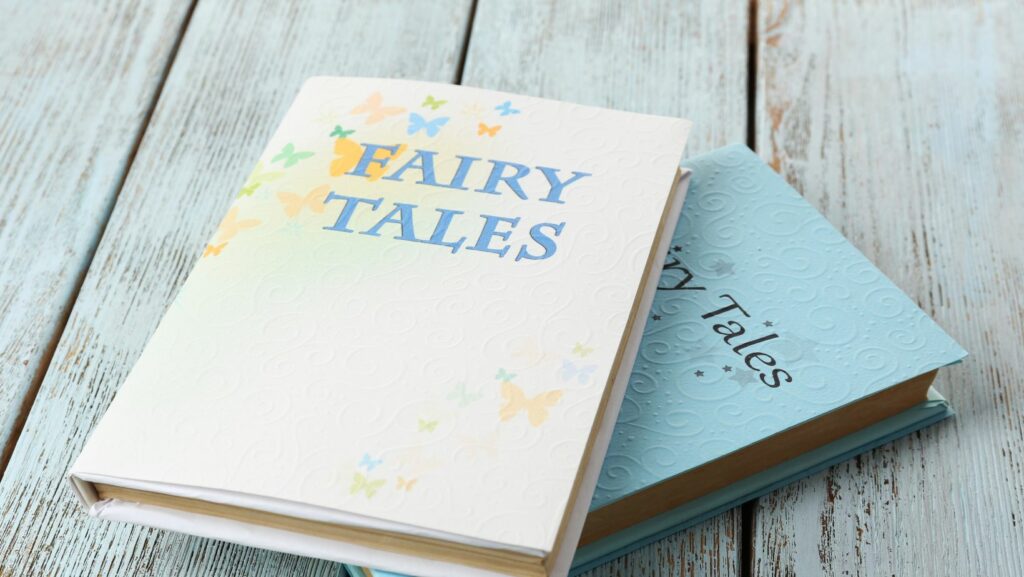Basic Book Genres
- Diverse Genres: Familiarity with basic book genres such as fiction, non-fiction, mystery, fantasy, romance, and horror helps readers navigate the literary world and choose books that resonate with their interests.
- Fiction vs. Non-Fiction: Fiction offers imaginative narratives and subgenres like literary, historical, and science fiction, while non-fiction provides factual accounts through biographies, self-help, and true crime.
- Children’s Books: Understanding children’s genres—like picture books, middle-grade fiction, and young adult literature—encourages the development of literacy and engagement among various age groups.
- Genre Blending: Many authors experiment with genre blending, combining elements from different genres to create multifaceted narratives, enriching the reading experience and attracting diverse audiences.
- Literary Exploration: Exploring various genres not only broadens readers’ literary horizons but also deepens their appreciation for storytelling techniques and thematic depth in literature.
- Guided Selection: Knowing the fundamental genres provides readers a roadmap to selecting their next great read, enhancing their overall reading experience.
 Books have an incredible ability to transport readers to different worlds, spark imagination, and evoke emotions. Understanding basic book genres can enhance the reading experience by helping readers discover stories that resonate with their interests. From heart-pounding thrillers to heartwarming romances, each genre offers a unique flavor and appeal.
Books have an incredible ability to transport readers to different worlds, spark imagination, and evoke emotions. Understanding basic book genres can enhance the reading experience by helping readers discover stories that resonate with their interests. From heart-pounding thrillers to heartwarming romances, each genre offers a unique flavor and appeal.
Exploring these genres not only broadens one’s literary horizons but also provides insight into the diverse themes and styles that authors employ. Whether someone is a seasoned bibliophile or just starting their reading journey, knowing the fundamental genres can guide them in selecting their next great read. Dive into the fascinating world of book genres and unlock the door to countless adventures waiting to be explored.
Overview Of Basic Book Genres
Understanding basic book genres enables readers to navigate the literary world effectively. Various genres include:
- Fiction: Fiction encompasses imaginative narratives often reflecting human experiences. Subgenres include literary fiction, historical fiction, and science fiction.
- Non-Fiction: Non-fiction contains factual accounts or interpretations of real events, people, or concepts. Types include biographies, memoirs, and self-help books.
- Mystery: Mystery focuses on suspenseful plotlines that revolve around crime or puzzles. Readers engage with detectives and unravel intricate clues.
- Fantasy: Fantasy transports readers to enchanting worlds filled with magic and mythical creatures. Common themes include epic quests and battles between good and evil.
- Romance: Romance emphasizes romantic relationships and emotional bonds. Subgenres range from contemporary romance to historical romance and include various styles and settings.
- Horror: Horror evokes fear and dread through supernatural or psychological elements. Themes often involve monsters, haunted locations, or existential threats.
- Biography and Autobiography: Biography narrates the life story of a person, while autobiography focuses on the author’s experiences.
- Graphic Novels: Graphic novels combine visual artistry with storytelling. They cover various genres and formats, appealing to diverse audiences.
Exploring these basic genres enhances reading choices and strengthens the connection to literature. Readers can find stories tailored to their preferences and broaden their literary horizons.
Fiction Genres
Fiction genres encompass a wide array of storytelling styles, each offering distinct narratives and experiences. Understanding these genres aids readers in selecting the stories that most resonate with their preferences.
Literary Fiction
Literary fiction emphasizes character development, thematic depth, and stylistic nuance. This genre often tackles complex human experiences and societal issues, showcasing authors’ unique voices and writing techniques. Key characteristics include intricate plots and profound emotional resonance, often leading to introspection and discussions of existential questions.
Historical Fiction
Historical fiction delves into past events, weaving fictional narratives with real historical contexts. Authors meticulously research time periods, settings, and cultural nuances to create authentic backdrops for their characters’ stories. This genre combines educational elements with engaging storytelling, allowing readers to explore significant historical moments and figures vividly.
Science Fiction
Science fiction explores futuristic concepts, advanced technologies, and alternate realities. This genre pushes the boundaries of imagination, often delving into scientific possibilities and ethical dilemmas. Subgenres, such as cyberpunk and space opera, further diversify the landscape, catering to various interests. Readers can engage with thought-provoking theories about the future of humanity and the universe.
Fantasy
Fantasy transports readers into worlds imbued with magic, mythical creatures, and extraordinary adventures. This genre often features well-developed mythologies and unique rules governing its universes. Subgenres include epic fantasy, urban fantasy, and dark fantasy, each presenting distinct environments and challenges. This genre provides an escape from reality, allowing readers to immerse themselves in imaginative realms and epic quests.
Non-Fiction Genres
Non-fiction genres encompass works grounded in factual content, aimed at informing, educating, or enlightening readers. These genres provide insights into reality, human experiences, and historical events.
Biography
Biography focuses on the life stories of individuals, offering insights into their experiences, achievements, and challenges. These works often highlight notable figures, such as politicians, artists, or scientists. The genre may also include personal narratives that explore lesser-known individuals, providing diverse perspectives on the human experience.
Self-Help
Self-help genres aim to improve personal development and well-being. These books often provide strategies, techniques, and advice on various topics, including relationships, finances, and mental health. Authors typically draw on psychological principles, research, and personal anecdotes to engage and guide readers in making positive changes in their lives.
True Crime
True crime delves into real criminal cases, exploring the events, motives, and consequences of specific crimes. This genre often focuses on infamous criminals and high-profile cases, presenting a detailed account of investigations and legal proceedings. Through thorough research and storytelling, true crime engages readers with the complexities of human behavior and societal issues related to crime.
Children’s Book Genres
Children’s books encompass various genres tailored to different age groups and interests. These genres engage young readers, fostering a love for literature and enhancing their understanding of the world.
Picture Books
Picture books combine illustrations and text to tell stories aimed at young children. They typically target ages 0 to 5. Picture books introduce foundational concepts like numbers, shapes, and colors, enhancing literacy skills through visual storytelling. Common themes include friendship, family, and adventure. Examples include “”Where the Wild Things Are”” by Maurice Sendak and “”The Very Hungry Caterpillar”” by Eric Carle.
Middle-Grade Fiction
Middle-grade fiction caters to readers aged 8 to 12, featuring longer narratives and more complex themes. These stories often explore friendships, family dynamics, and personal growth. Protagonists are typically children or pre-teens, facing relatable challenges. Titles like “”Harry Potter and the Sorcerer’s Stone”” by J.K. Rowling and “”Wonder”” by R.J. Palacio exemplify the genre’s emphasis on character development and emotional depth.
Young Adult
Young adult (YA) literature targets readers aged 12 to 18, addressing themes relevant to adolescence, such as identity, relationships, and social issues. YA novels often contain rich character arcs and lead to reflections on personal choices and consequences. Popular examples include “”The Fault in Our Stars”” by John Green and “”The Hunger Games”” by Suzanne Collins. The genre resonates deeply, fostering discussions on important topics among teens.
Genre Blending
Genre blending occurs when a book incorporates elements from multiple genres, creating unique and multifaceted narratives. This approach enriches storytelling by attracting diverse readerships and fostering creativity. Examples of genre blending include:
- Historical Fantasy: Combines historical settings with magical elements, exemplified by works like The Night Circus by Erin Morgenstern.
- Romantic Mystery: Merges romance with mystery, often featuring a love story entangled in a suspenseful plot, as seen in Outlander by Diana Gabaldon.
- Science Fiction Horror: Blends futuristic themes with horror, showcasing terrifying scenarios in advanced or alien worlds, demonstrated in The Silence by Tim Lebbon.
Authors frequently use genre blending to challenge traditional boundaries, offering fresh perspectives and innovative storytelling techniques. This method allows readers to explore narrative complexities and encounter diverse character arcs. It encourages experimentation with themes, making literature more dynamic and relatable.
 Understanding genre blending enables readers to appreciate the richness of literature. Readers can discover hidden gems that might appeal to their tastes by exploring blended genres, leading to a more fulfilling reading experience.
Understanding genre blending enables readers to appreciate the richness of literature. Readers can discover hidden gems that might appeal to their tastes by exploring blended genres, leading to a more fulfilling reading experience.
Each Genre Offers Distinct Narratives That Cater to Diverse Tastes and Preferences
Exploring basic book genres opens up a world of literary possibilities. Each genre offers distinct narratives that cater to diverse tastes and preferences. By understanding these categories readers can make informed choices that enhance their reading experience.
Delving into various genres not only broadens one’s literary horizons but also deepens the connection to storytelling. Whether it’s the thrill of a mystery or the magic of fantasy there’s a genre waiting to resonate with every reader.
Encouraging exploration and embracing genre blending can lead to discovering new favorites and hidden gems. The journey through literature is as varied as the stories themselves, inviting readers to embark on countless adventures.



